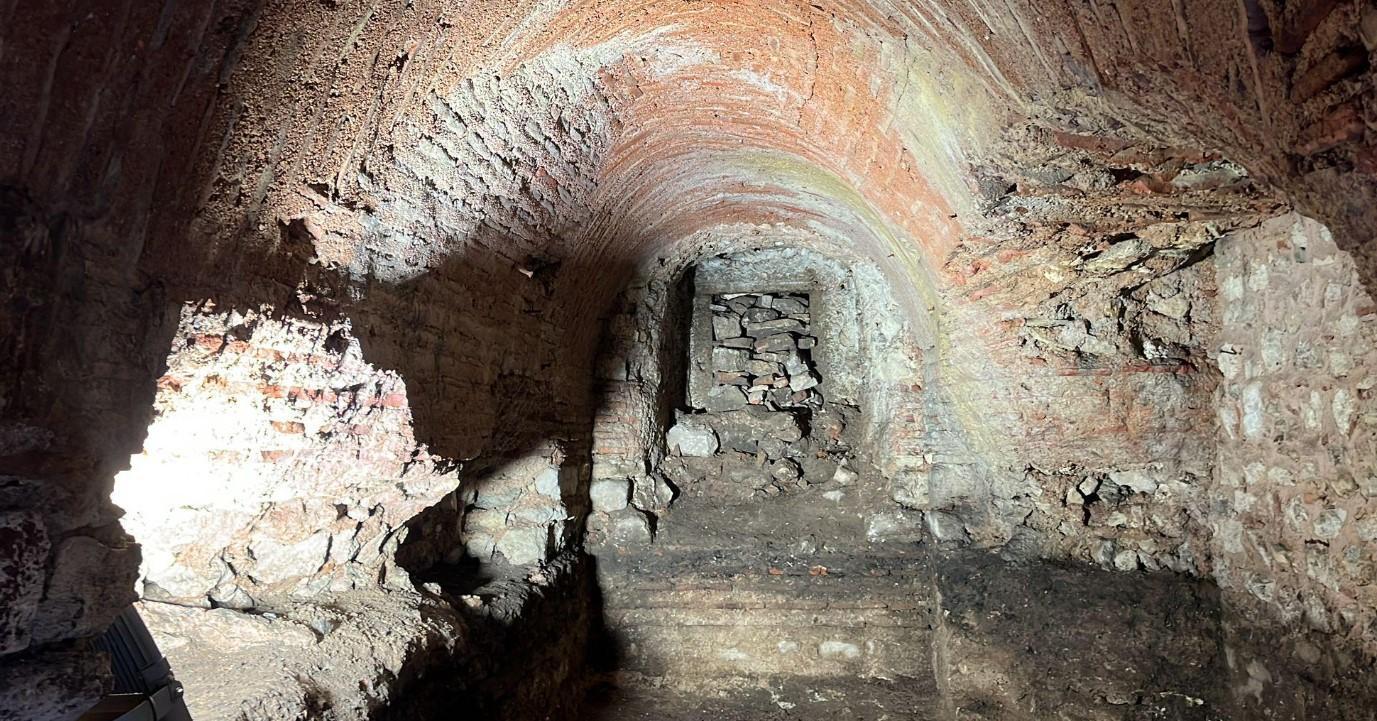
A 1,500-year-old underground passage has come to light during the ongoing excavation works in the remains of Saint Polyeuktos Church in Istanbul’s Saraçhane neighborhood, which witnessed destruction during the Latin invasion.
The teams from Istanbul Municipality’s Cultural Heritage Department on June 8 last year initiated excavation works in the area where the church lies.
During the ongoing works, the excavation teams found an underground passage that dates back 1,500 years, with building stones of the hallway shaped with marble and adorned with reliefs.
The structure sets an example for standing strong unharmed despite several tremors that Istanbul witnessed over the years, stated Mahir Polat, deputy secretary general of the municipality.
“What is one of the most important aspects of this discovery of a 1,500-year-old passage? Dozens of tremors have passed in these 1,500 years in Istanbul, which is currently struggling with earthquake risk. This structure has managed to survive all these earthquakes. Türkiye should learn the secret and have knowledge of this,” Polat explained.
Reminding that civil engineers and scientific consultants who specialize in earthquakes also assisted in the municipality’s excavation works, Polat stated that the experts would also share a report documenting the earthquakes the area witnessed in the past.
The area of the church built in 524 plays an essential role in urban archaeology, as unknown historical knowledge about the city might come to light in the ongoing excavation works, Polat noted.
“We have just completed a project that will transform it into a touristic place within 10 months, from a derelict area where homeless people stay and where all kinds of crime occur,” Polat said.
As archaeological excavations will continue simultaneously after opening the place to visitors, it will serve as a chance for Istanbulities to learn more about archaeology, Polat noted.
“We will do simultaneous excavations while people pay a visit. Also, we will have the chance to explain the meaning of the historical structure with that,” he said.
Recently, the municipality’s team discovered a statue in the same area, estimated to belong to the Roman period and nearly 1,900 years old.
During the excavation works in the area, apart from the statue, the teams also found 681 bronze coins, stamped bricks, marble pieces, ceramics, oil lamps, glass and metal artifacts.